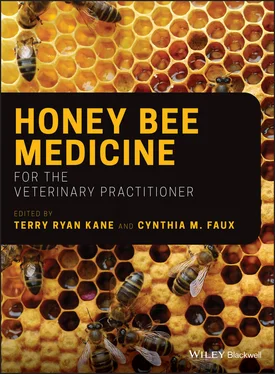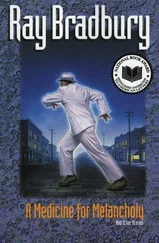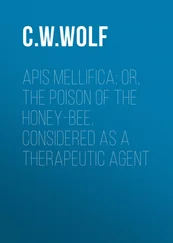9 Chapter 9Figure 9.1 Structure and organization of the honey bee worker gut microbiome...Figure 9.2 The dominant bacteria found in the gut of workers, drones, and qu...Figure 9.3 Factors that can alter the composition of the honey bee gut micro...Figure 9.4 (a) Average bacterial abundance in the gut of honey bees that wer...
10 Chapter 10Figure 10.1 Honey Bee Methods of Detoxifying Drugs, Insecticides, and Other ...Figure 10.2 Routes of Exposure by Honey Bees to Drugs, Insecticides, and Oth...Figure 10.3 Honey bees foraging for water on a leaf.
11 Chapter 11Figure 11.1 A modern Langstroth bee hive equipped with medium hive bodies an...Figure 11.2 Bee space incorporated into a hive design allows for bees to mov...Figure 11.3 The bottom board landing provides a space for bees to alight and...Figure 11.4 Solid (left) and screened (right) bottom boards commonly used by...Figure 11.5 Four‐way pallets used by commercial beekeepers incorporate the b...Figure 11.6 Entrance reducer installed on a Langstroth hive.Figure 11.7 Hive bodies in 8 and 10 frame designs are widely used by beekeep...Figure 11.8 Bee hives using two deep hive bodies for the brood chamber (bott...Figure 11.9 Some apiaries may incorporate several approaches to hive body us...Figure 11.10 Removable frames allow for easy management of the hive by divid...Figure 11.11 This hive had a top deep hive body (removed here) that had medi...Figure 11.12 A frame with plastic foundation installed (left) and the format...Figure 11.13 Drone frame broodFigure 11.14 Queen excluder.Figure 11.15 The inner cover allows for proper bee space and ventilation at ...Figure 11.16 Top covers protect hives from the elements and potential robber...Figure 11.17 Hive stands keep hives off the ground to reduce moisture accumu...Figure 11.18 The Flow Hive uses a honey super and proprietary plastic frames...Figure 11.19 Veils that incorporate coveralls provide maximum protection to ...Figure 11.20 Gloves provide protection from stings. The most common styles u...Figure 11.21 The J Hook hive tool incorporates a ledge on the prying end of ...Figure 11.22 A smoker is a tool that uses smoke directed at bees through a b...Figure 11.23 A top feeder is a common way to feed bees sugar syrup during th...Figure 11.24 Supplemental feeding of dry sugar, candy boards, and fondant du...Figure 11.25 Pollen traps allow a beekeeper to manage the amount of pollen e...Figure 11.26 An apiary site should be on flat ground with all tripping hazar...Figure 11.27 An apiary site that is accessible by car or off‐road vehicle wi...
12 Chapter 12Figure 12.1 Hobby beekeeper apiary.Figure 12.2 Commercial beekeeper apiary with 32 colonies.Figure 12.3 Blooming monoculture fields of planted sunflowers (a) and canola...Figure 12.4 Commercial beekeeper loading honey bee colonies onto a truck.Figure 12.5 Commercial beekeeper colonies covered with a net to prevent exce...Figure 12.6 Commercial beekeeper holding yard used to store colonies awaitin...Figure 12.7 In locations where bears are known to be present, apiaries may h...Figure 12.8 Entrance to an apiary that requires undoing a knot to open the g...Figure 12.9 If it has recently rained, take caution when entering a location...Figure 12.10 Transporting strapped colonies into a yard with difficult acces...Figure 12.11 Colonies in the floodplain of a nearby river. Access to the loc...Figure 12.12 Colonies placed in almond orchards just before bloom (a), durin...Figure 12.13 Smaller scale beekeepers may use hand‐powered tools to extract ...
13 Chapter 13Figure 13.1 Hives placed on stands can keep the colonies out of potentially ...Figure 13.2 When space allows hives can be placed to maximize distance betwe...Figure 13.3 Sometimes the beekeeper is forced to lay out hives in a linear f...Figure 13.4 Painting hives different colors, large geometric shapes on the h...Figure 13.5 Hives enclosed within electric fencing.
14 Chapter 14Figure 14.1 The bee yard on a nice day.Figure 14.2 Lighting a smoker. A variety of fuels can be used as long as the...Figure 14.3 Full bee suit with gloves.Figure 14.4 (a) Standing in front of the hive entrance (not to do). Returnin...Figure 14.5 Observe activity at the entrance, including the pollen loads bei...Figure 14.6 A few puffs of smoke at the entrance will help calm the defensiv...Figure 14.7 Lift the lid and apply a few puffs of smoke.Figure 14.8 A hive tool.Figure 14.9 The top of the hive placed upside down (inside is up) on an empt...Figure 14.10 Applying a few puffs of smoke over the top of the exposed frame...Figure 14.11 Tipping the box to apply smoke.Figure 14.12 If the box is a honey super, remove and place on the upturned l...Figure 14.13 If there is one, remove the queen excluder.Figure 14.14 (a–c) Remove the outer frame first and set it down on end. This...Figure 14.15 Sequentially remove and examine each frame.Figure 14.16 Examining a frame with the sun at your back to best visualize e...Figure 14.17 Pollen and nectar.
15 Chapter 15Figure 15.1 All three antibiotics approved for honey bees can be fed by mixi...Figure 15.2 Example VFD form designed by the author and available on the int...Figure 15.3 Identification of animals treated with antibiotics to avoid resi...Figure 15.4 Example of a Canadian provincial (Ontario) VCPR form.
16 Chapter 16Figure 16.1 A beekeeper performing a routine hive inspection using an electr...
17 Chapter 17Figure 17.1 Warning sign.
18 Chapter 18Figure 18.1 Bees robbing a hive.Figure 18.2 Monitoring a hive for varroa mites.Figure 18.3 Honey bee foraging alongside a sweat bee on Echinacea flower. Pa...Figure 18.4 Parasite prevalence in bee (a) and on flower (b) genera across t...
19 Chapter 19Figure 19.1 Steady honey bee colony numbers in the United States since 1996....Figure 19.2 Self‐reported causes of bee colony losses, by year (www.beeinfor...Figure 19.3 Colonies marked in a commercial apiary for having CCD symptoms....Figure 19.4 Field collection of honey bee samples for laboratory analysis....
20 Chapter 20Figure 20.1 An adult female Varroa destructor perched on an experimentally r...Figure 20.2 An adult mite perched on a toothpick.Figure 20.3 A mite on the author's finger, extending her chemosensory forele...Figure 20.4 The ventral surface of a mite suspended in oil. The large dorsal...Figure 20.5 Most feeding phoretic mites position themselves between the thir...Figure 20.6 A normal sized worker bee for scale next to two stunted pupae fo...Figure 20.7 This bee developed in a terminally mite‐infested colony exhibiti...Figure 20.8 Vertical and horizontal mechanisms of mite transmission between ...Figure 20.9 An experimentally heavily infested colony in a glass‐walled obse...Figure 20.10 “Parasitic Mite Brood Syndrome” in honey bees is characterized ...Figure 20.11 The author's sugar shake sampling kit arranged on the tailgate ...Figure 20.12 A yellow ball of pollen and three red mites floating in dissolv...
21 Chapter 21Figure 21.1 Symptomatic deformed wing virus infection of worker honey bees. ...Figure 21.2 Symptomatic larvae and adult bees infected by acute bee paralysi...Figure 21.3 Type 2 symptoms of chronic bee paralysis virus. (a) Typical symp...Figure 21.4 Modes of virus transmission.
22 Chapter 22Figure 22.1 Michigan State University researchers study colonies affected wi...Figure 22.2 A brood frame from a colony infected with EFB exhibiting a typic...Figure 22.3 A frame from a colony with severe EFB disease. Note the multiple...Figure 22.4 Perforated cappings in a colony infected with AFB disease. As th...Figure 22.5 a (left) and Figure 22‐5b (right) Comparison of matchstick test ...
23 Chapter 23Figure 23.1 (A) Schematic representation of the microsporidia spore. (B) Lig...Figure 23.2 Life cycle of a Nosema spore. Infection begins when a bee ingest...Figure 23.3 Brownish‐yellow fecal spotting on the exterior of a beehive.Figure 23.4 Honey bee Chalkbrood disease. (A) Chalkbrood mummy.(B) Brood...
Читать дальше












